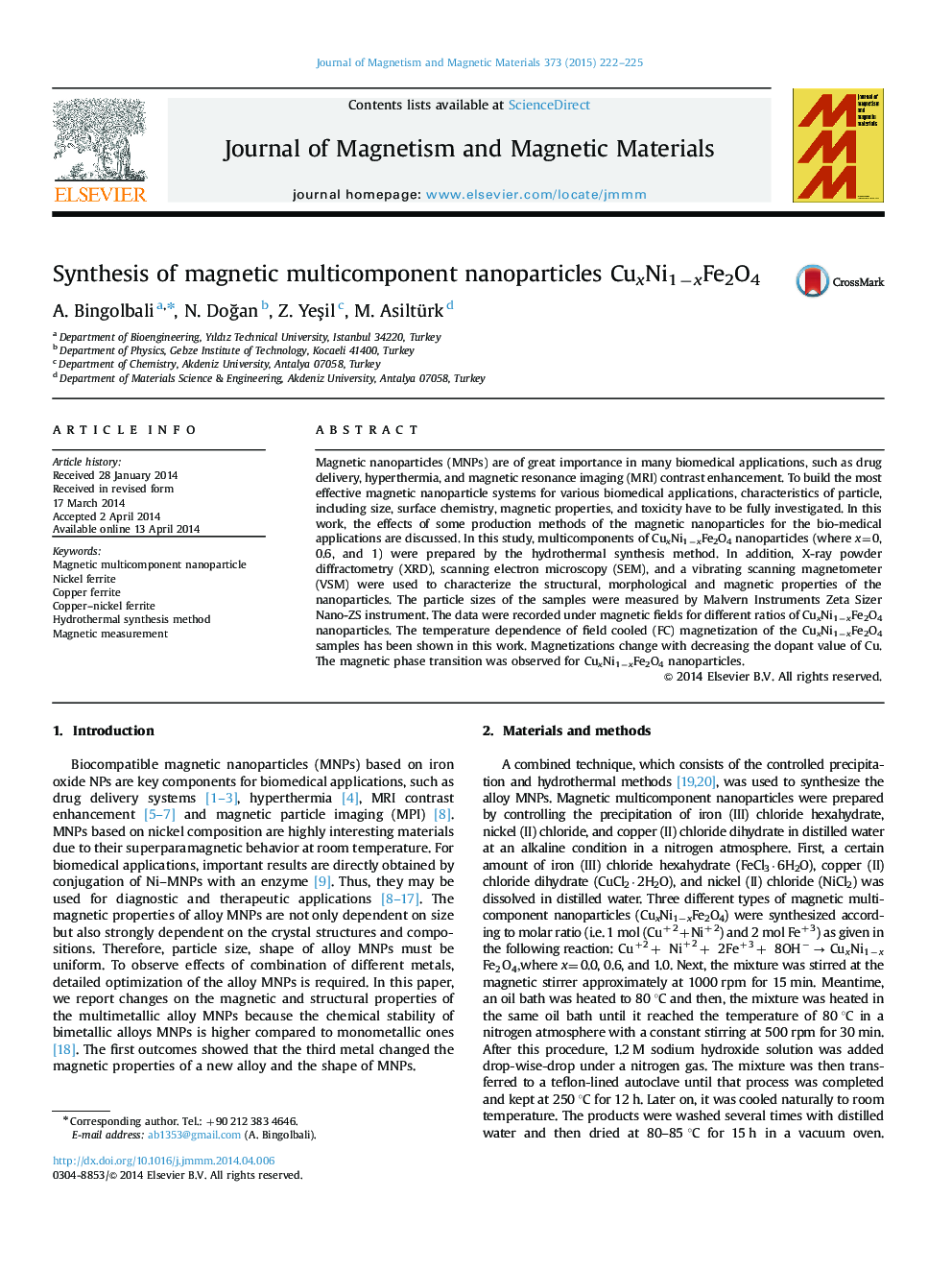| Article ID | Journal | Published Year | Pages | File Type |
|---|---|---|---|---|
| 1799601 | Journal of Magnetism and Magnetic Materials | 2015 | 4 Pages |
•Multicomponents of the CuxNi1−xFe2O4 nanoparticles were prepared.•A third metal changes shape and magnetic properties of a new alloy.•Coercivity fields improve with increasing the Cu content.•Minimum particle size yields high magnetization.
Magnetic nanoparticles (MNPs) are of great importance in many biomedical applications, such as drug delivery, hyperthermia, and magnetic resonance imaging (MRI) contrast enhancement. To build the most effective magnetic nanoparticle systems for various biomedical applications, characteristics of particle, including size, surface chemistry, magnetic properties, and toxicity have to be fully investigated. In this work, the effects of some production methods of the magnetic nanoparticles for the bio-medical applications are discussed. In this study, multicomponents of CuxNi1−xFe2O4 nanoparticles (where x=0, 0.6, and 1) were prepared by the hydrothermal synthesis method. In addition, X-ray powder diffractometry (XRD), scanning electron microscopy (SEM), and a vibrating scanning magnetometer (VSM) were used to characterize the structural, morphological and magnetic properties of the nanoparticles. The particle sizes of the samples were measured by Malvern Instruments Zeta Sizer Nano-ZS instrument. The data were recorded under magnetic fields for different ratios of CuxNi1−xFe2O4 nanoparticles. The temperature dependence of field cooled (FC) magnetization of the CuxNi1−xFe2O4 samples has been shown in this work. Magnetizations change with decreasing the dopant value of Cu. The magnetic phase transition was observed for CuxNi1−xFe2O4 nanoparticles.
